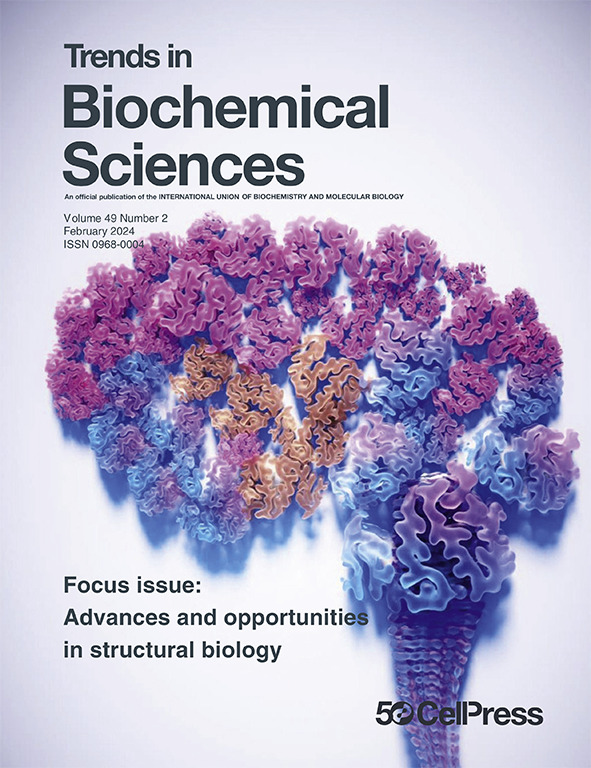从藻类到植物:了解基于类肾上腺素的二氧化碳浓缩机制。
IF 11.6
1区 生物学
Q1 BIOCHEMISTRY & MOLECULAR BIOLOGY
Trends in Biochemical Sciences
Pub Date : 2025-01-01
Epub Date: 2024-11-25
DOI:10.1016/j.tibs.2024.10.010
引用次数: 0
摘要
类肾上腺素是自然界中最丰富的生物二氧化碳浓缩机制之一的关键组成部分。据估计,基于类火绒素的二氧化碳浓缩机制(pCCMs)占全球光合作用二氧化碳捕获量的三分之一。我们对类火绒素工作原理的分子认识主要基于对绿藻衣藻的研究。在此,我们将回顾衣藻中热核糖体的生物发生、结构和功能等基础知识的最新进展,以及目前正在进行的将功能性 pCCM 引入维管植物叶绿体的工程生物学研究。本文章由计算机程序翻译,如有差异,请以英文原文为准。
From algae to plants: understanding pyrenoid-based CO2-concentrating mechanisms.
Pyrenoids are the key component of one of the most abundant biological CO2 concentration mechanisms found in nature. Pyrenoid-based CO2-concentrating mechanisms (pCCMs) are estimated to account for one third of global photosynthetic CO2 capture. Our molecular understanding of how pyrenoids work is based largely on work in the green algae Chlamydomonas reinhardtii. Here, we review recent advances in our fundamental knowledge of the biogenesis, architecture, and function of pyrenoids in Chlamydomonas and ongoing engineering biology efforts to introduce a functional pCCM into chloroplasts of vascular plants, which, if successful, has the potential to enhance crop productivity and resilience to climate change.
求助全文
通过发布文献求助,成功后即可免费获取论文全文。
去求助
来源期刊

Trends in Biochemical Sciences
生物-生化与分子生物学
CiteScore
22.90
自引率
0.70%
发文量
148
审稿时长
6-12 weeks
期刊介绍:
For over 40 years, Trends in Biochemical Sciences (TIBS) has been a leading publication keeping readers informed about recent advances in all areas of biochemistry and molecular biology. Through monthly, peer-reviewed issues, TIBS covers a wide range of topics, from traditional subjects like protein structure and function to emerging areas in signaling and metabolism. Articles are curated by the Editor and authored by top researchers in their fields, with a focus on moving beyond simple literature summaries to providing novel insights and perspectives. Each issue primarily features concise and timely Reviews and Opinions, supplemented by shorter articles including Spotlights, Forums, and Technology of the Month, as well as impactful pieces like Science & Society and Scientific Life articles.
 求助内容:
求助内容: 应助结果提醒方式:
应助结果提醒方式:


